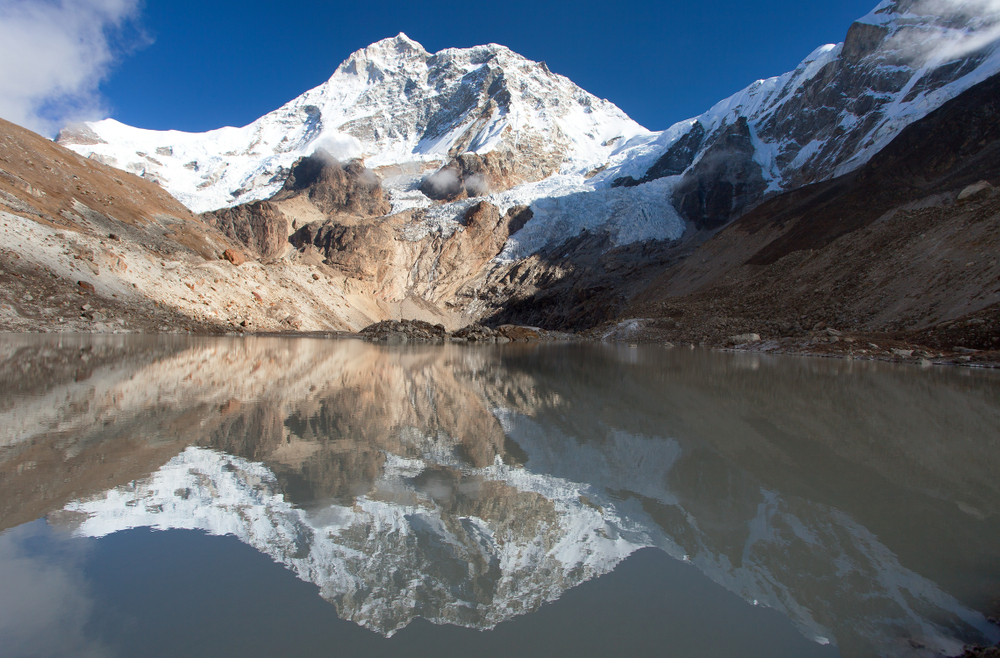Makalu Barun Overview
Makalu Barun National Park, locally known as मकालु बरुण राष्ट्रिय निकुञ्ज, is a magnificent protected area in the eastern Himalayas of Nepal. Covering an area of 579 square miles (1,500 square kilometers), the park lies in the Solukhumbu and Sankhuwasabha districts, sharing its eastern border with the Qomolangma National Nature Preserve in Tibet. Situated in the shadow of Mount Makalu, the world’s fifth-highest peak at 27,838 feet (8,485 meters), the park’s remote and rugged terrain creates a breathtaking wilderness that is both pristine and ecologically significant.
The park’s landscapes are among the most diverse and dramatic in the world, ranging from tropical forests at lower elevations to icy glaciers and towering peaks. The terrain features lush green valleys carved by rivers like the Barun and Arun, alpine meadows dotted with wildflowers, and rocky cliffs draped in snow. Key highlights include the Barun Valley, known for its unparalleled beauty and biodiversity, and Mount Makalu, which dominates the skyline with its imposing presence. Other notable features include cascading waterfalls, high-altitude lakes such as Saldim and Barun Pokhari, and ancient forests of rhododendron, juniper, and fir that cloak the hillsides.
Makalu Barun is a haven for wildlife enthusiasts, with over 300 species of birds and a diverse array of mammals. The elusive snow leopard prowls the higher altitudes, while red pandas, Himalayan black bears, and clouded leopards inhabit the dense forests. Among the park’s avian residents, visitors may spot colorful species such as the Himalayan monal, Nepal’s national bird, along with hornbills, sunbirds, and several species of eagles and vultures. Butterflies and moths add to the park’s vibrant fauna, showcasing its ecological richness.
Visitors are drawn to the park for its unspoiled natural beauty and challenging trekking opportunities. The Makalu Base Camp Trek is a standout experience, offering breathtaking views of the Himalayan giants, including Everest, Lhotse, and Baruntse. Along the trails, visitors can engage with local Sherpa and Rai communities, gaining insights into their unique cultures and traditions. Camping, birdwatching, and photography are other popular activities in this serene and untouched wilderness.
The park is not without its challenges. Its remote location and rugged terrain make conservation efforts logistically demanding, but significant progress has been made in protecting its biodiversity. Makalu Barun has been recognized as part of the Sacred Himalayan Landscape and is supported by collaborative efforts involving local communities and international conservation organizations. Programs to combat poaching, manage human-wildlife conflicts, and promote sustainable tourism have contributed to preserving the park’s unique ecosystems.
Makalu Barun National Park is a jewel of the Himalayas, offering visitors an unforgettable experience of nature’s grandeur and ecological richness, all while showcasing the resilience of conservation efforts in one of the planet’s most remote corners.










































































